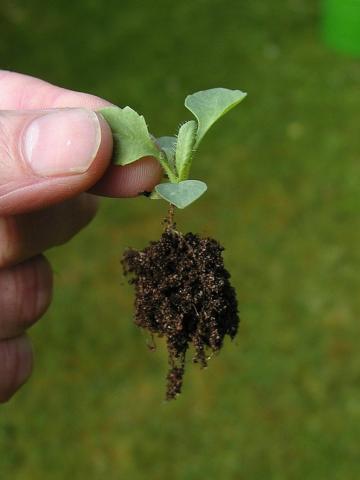
When your plants no longer have the space needed to survive in their containers, it’s time to transplant those babies. Taking growing plants and placing them into a larger space will give them room to spread their roots and develop successfully. For some gardeners, it can be something of the mundane, while for others it is something completely new to attempt. For those of you who are new to the endeavor, there is no need to be nervous because I’ve broken down the task of transplanting into 6 basic steps.
Step 1: Prepare Your Plants
Slightly fertilize the plants with a natural, organic fertilizer 2 or 3 days prior to them being transplanted. You can fertilize using a water mixture, or you can fertilize, and then water the plants.
Step 2: Fertilize the New Area
Using the same type of fertilizer, fertilize the new area where the plants will soon be transplanted. This can be in a bigger pot or area of your garden. You can mix or water in the fertilizer into garden soil or potting soil.
Step 3: Dig the Holes
Using the necessary measurements required for depth as well as space between each plant, start digging the holes for your plants. Usually the hole size is around the same size as the container holding the plants being transplanted.
Step 4: Saturate with Water
Saturate the new area and holes with water, while trying to completely moisten all the soil.
Step 5: Take out Plants
Carefully take the plants out of their containers. Be sure to take your time with this because you do not want to damage any of the plants’ roots while transplanting. When taking plants out of their previous container, sometimes you may destroy a few roots. This happens, and it is okay as long as the main root is not damaged.
Step 6: Place in Hole
While continuing to be super careful, place the plants into the holes of the new area. Again, take your time, and try not to force the plants into the hole. If you need to re-dig any of the holes, you can do so. Gently press the plants into the hole. Make sure when placing the plants into their designated holes, that you do not press the plants hard into the dirt, as this could cause harm to them.
Transplanted plants usually take a few days to adjust to their new homes. For some plants, it is easier to adapt to new environments, while for some it is not so easy. It really depends on the plant. The best advice I can give to you is to take your time while transplanting. It is a delicate task that requires nurturing energy. If done right, your plants will continue to grow and grow.
Stay tuned for more organic home gardening tips and ideas!








